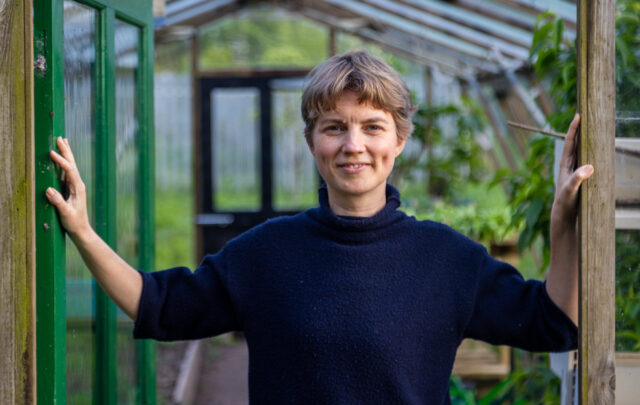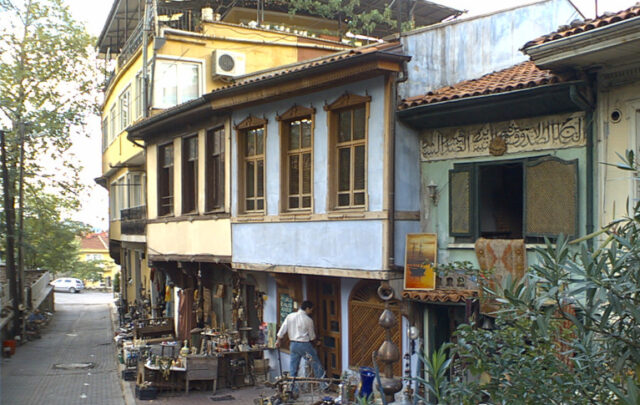
If we don’t work together right now, things are going to fall apart.
That’s the verdict I take from the calamitous acquittal of the ‘Bundy Seven’ last week in a federal courthouse in Portland, Oregon. Unless quickly corralled, the Dogs of Anarchy will shortly let loose in the wide open spaces of the American West to tear apart the delicate fabric of urban-rural, federal-private, and wild-domestic relationships that have been carefully built, acre-by-acre, over the last twenty years. And once Humpty Dumpty is pulled off his wall by these fierce canine teeth, he will never be put back together again.
The verdict doesn’t just apply to the West, of course – it applies to America as a whole. We’re at a tipping point. Either we figure out a way to work together and stay united as a nation, or everything will come undone. It’s not just about economic or cultural divides in America, the forces of dissolution are also being fanned by a deteriorating climate in the shape of ever more frequent fire, flood, and drought. Think income inequality is bad and worth fighting over? Wait until water shortages hit.
Scientists often point to the rapidly warming Arctic as an early warning signal of what’s ahead for the planet physically if we don’t act quickly to curb greenhouse gas emissions. But there’s an equal urgency to what’s happening in the rural West. The breakdown of social norms symbolized in the Bundy acquittal – and likely to be catalyzed by it – must be seen as an early warning signal of what’s going to happen socially and politically to this great nation if we don’t act with equal haste.
I’ll offer one solution: the radical center.
I’m a former archaeologist and Sierra Club activist who dropped out of the ‘conflict industry’ in 1997 to co-found The Quivira Coalition, a nonprofit dedicated to building a radical center between ranchers, conservationists, public land managers, and scientists. In the mid-1990s, news headlines featured political gridlock, anti-government fanaticism, political assaults on environmental regulations, local demands to turn over federal land to the states, ‘patriotic’ armed militia groups, courtroom brawls between activists and rural residents over endangered species, and finger-pointing and trash-talking generally.
Sound familiar?
Our effort focused on resolving the long-standing feud between ranchers and environmentalists, a bloody and hopeless fight that had imperiled the wide open spaces of our beloved West. Our idea was to find a ‘third way’ beyond the polarization in order to implement practical, on-the-ground goals through collaboration, not confrontation. We called it the radical center and defined its mission as “a grassroots coming-together of diverse people to discuss their common interests rather than argue their differences and who agree to work cooperatively on a pragmatic program of action that improves the well-being of all living things.”
Bill McDonald, a rancher in southern Arizona, coined the term in the mid-1990s to describe an emerging and consensus-based approach to land management challenges in the region. It was radical because it challenged various orthodoxies at work at the time, including the conventional belief that conservation and ranching were part of a ‘zero sum’ game – that one could only advance if the other retreated. The center referred to the pragmatic, middle-ground between extremes. It meant partnerships, respect, and trust. But most of all, it meant action – working in the radical center meant walking the talk.
Today, there are signs of progress all over the West as people work together toward common goals. Especially encouraging has been the explosion of watershed-based collaborative organizations. Cooperation has become the norm – not the exception as it was when I began my work in conservation. However, the cooperative spirit of the radical center is now threatened by the actions of a small group of diehard anarchists who are manipulating legitimate public discontent and anxiety in the rural West (which has fallen on deaf ears among urban residents) in a brazen attempt to dissolve the democratic ties that bind us together as a people.
Finding an answer to this dilemma won’t be easy, just as there isn’t any easy solution for climate change. The alternative, however, is to stand by as Humpty Dumpty falls off his wall. We can keep him in place, but only if many hands work together – before it’s too late.
An update from Courtney:
It’s time to return to the grassroots!
That’s one of the big lessons I take from yesterday’s very distressing elections. Up and down the line, the radical center took a drubbing at the polls and I am deeply concerned that we are entering a period of destructive divisiveness. That’s why we need the radical center more now than ever for one-the-ground solutions. Frankly, this may be our last chance!
That’s why I’ve embarked on this project. I need your help, however, to get the book published and push this effort forward.
My Kickstarter project went live a few moments ago: https://www.kickstarter.com/projects/433640392/grassroots-the-rise-of-the-radical-center
Please support this project if you can. Send me your thoughts and feedback too. I think we’re all asking the same question: “What now?” This situation reminds me of the proverbial Chinese warning: “May you live in interesting times.” Interesting times indeed!
Thank you for your support,
Courtney
Feature image: Ranch via adamtbailey/flickr. Creative Commons 2.0.






